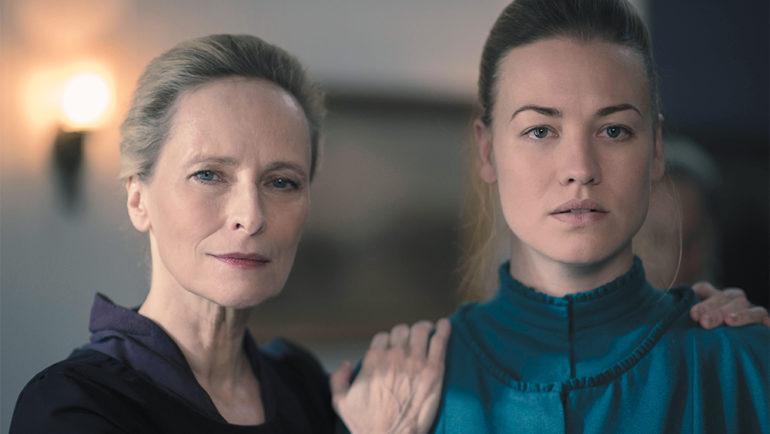How ‘The Handmaid’s Tale’ Uses Costumes to Denote Characters’ Mental States in Season 3
By Danielle Turchiano
LOS ANGELES (Variety.com) – The third season of “The Handmaid’s Tale” promises to be huge for Hulu. With restrictive abortion laws sweeping the South, the show, which has been a lightning rod for women’s rights issues since its inception in 2017, is in greater demand now than ever — 27 times more in demand than the average TV show in the U.S. heading into its June 5 debut, according to audience measurement company Parrot Analytics.
So it’s perhaps a bit ironic that, at least at the beginning of Season 3, the iconic handmaid uniforms that have been seen on the steps of courthouses around the country in recent weeks are not the only focus of the story.
Rather, the spotlight is also on the character of Emily (played by Alexis Bledel), who fled Gilead at the end of the second season, landing on Canada’s shores at the start of this one. No longer forced to wear the scarlet red uniform of a handmaid, Emily embarks on a journey as a refugee, trying to reclaim her life but still deeply traumatized by her recent experiences.
Stepping into the role of costume designer, and tasked with delivering Emily’s look, is Natalie Bronfman, who is quite familiar with the series, having started as a costume buyer in the first season. Working her way up to costume supervisor under the guidance of then-designer Ane Crabtree, Bronfman understands the breakneck pace of building the show’s various dresses, cloaks, wings and tailored suits from scratch, often hand-dyeing pieces to give them the right hue and amount of age.
“I know the story of Gilead inside out and backwards, as if I’m living it myself,” Bronfman says. “My biggest job now is to maintain what we have as well as develop newer facets of characters as we discover them over the arc.”
Bronfman has reimagined the wardrobe for a couple of key characters, and is also introducing a new color palette. The designer needed to put Emily in a wardrobe of “regular” clothes because she’s living in a place without Gilead’s caste system. But she couldn’t completely go back to the well of Emily’s pre-Gilead style.
“Beforehand, for example, she might wear the top couple of buttons undone on her shirt; she might wear a skirt,” Bronfman says. Now “she wears her clothing like armor.”
This meant dressing Emily in high-necked items to keep every part of her covered, as well as putting her in padded coats — all done in earth tones to signal the character’s desire to blend in as much as possible.
Since Emily has arrived in Canada without anything but her handmaid’s garb and June’s baby strapped to her, all of her items in the early days of her journey are hand-me-downs that she has to make work even if they don’t quite fit. “Initially when you see Emily, you kind of go, ‘Oh,’” Bronfman says. “It’s nothing that she would ever pick.”
Similar is the wardrobe arc for the Commander’s wife, Serena (Yvonne Strahovski). Although she still lives within Gilead’s confines, she has become untethered after letting June’s baby leave Gilead at the end of the second season, and in a fit of mental instability, she burns down her house. As a result, she also must rely on others for her wardrobe.
“Nothing is really regular about Serena at all,” Bronfman says of the character’s clothes at the start of the season. “It’s all a bit frumpy, out of style, made from fabrics she would never wear.”
To further demarcate Serena’s mental and psychological change as the season goes on, Bronfman also played with “different potencies of teal, and different shapes as well.”
In addition, purple became an integral part of the story this season as the designer introduced a mulberry — nearly black — shade for the widows.
“I look at all of the tribal colors the women are wearing almost as an army uniform, and the purple is always awarded to a wounded soldier,” Bronfman says, adding that the widows in Gilead are wounded for two reasons: the loss of their husbands and the loss of their own agency — for “having to live in this society.”

